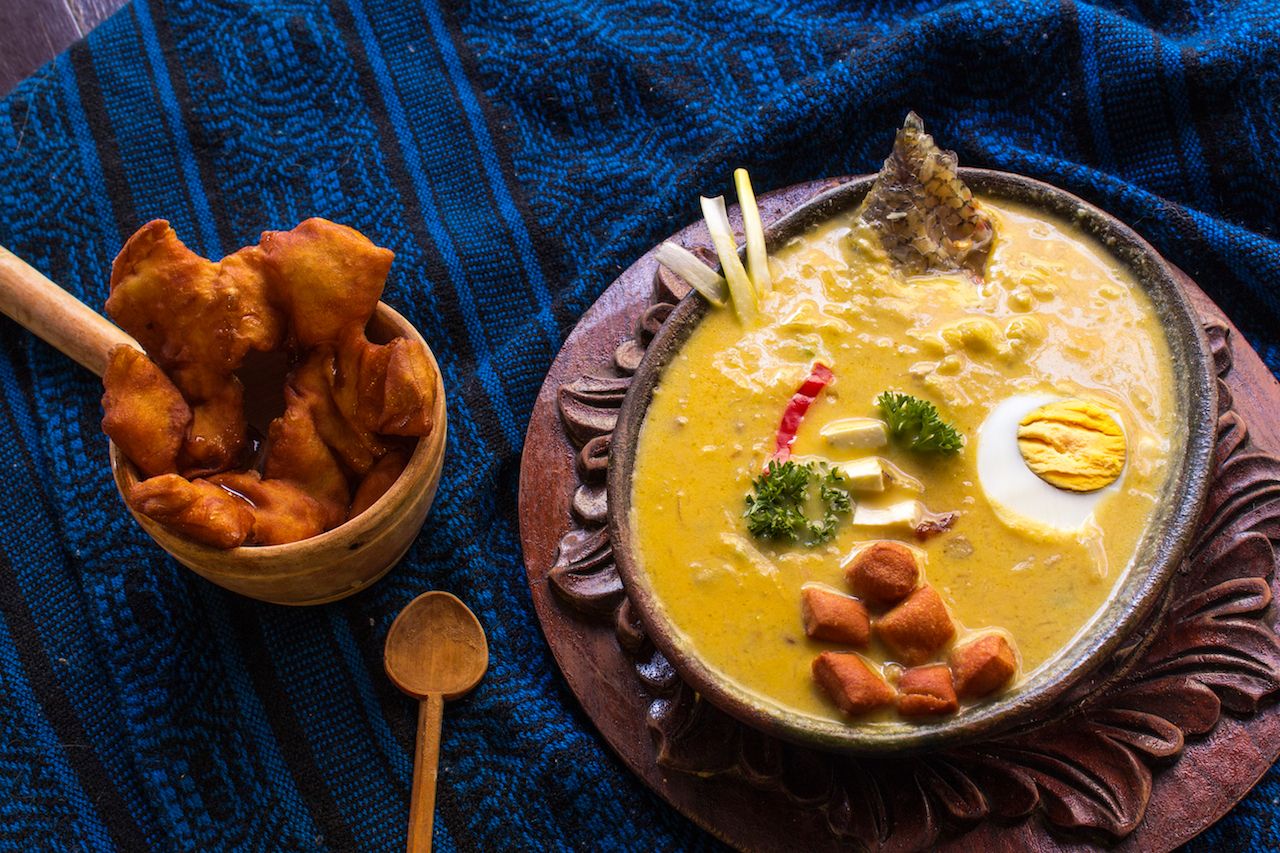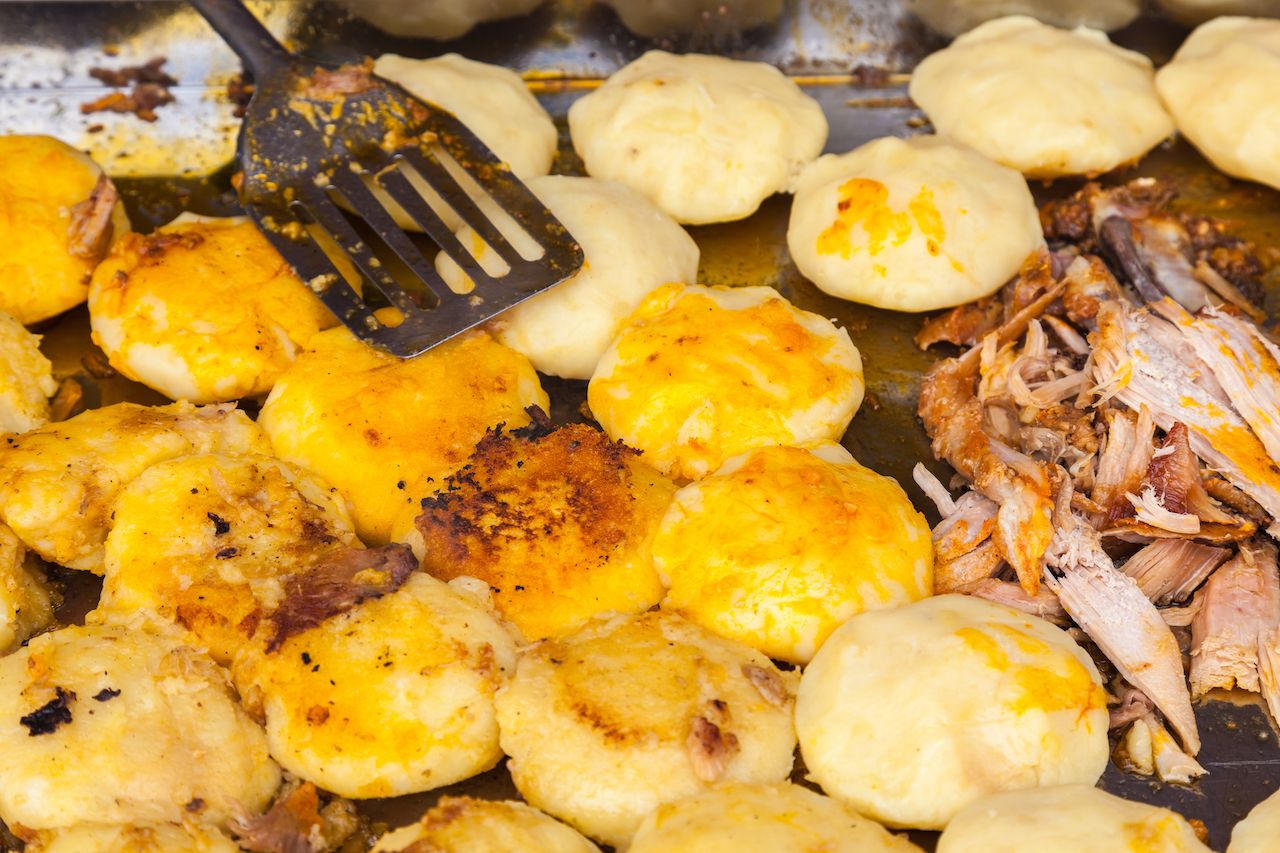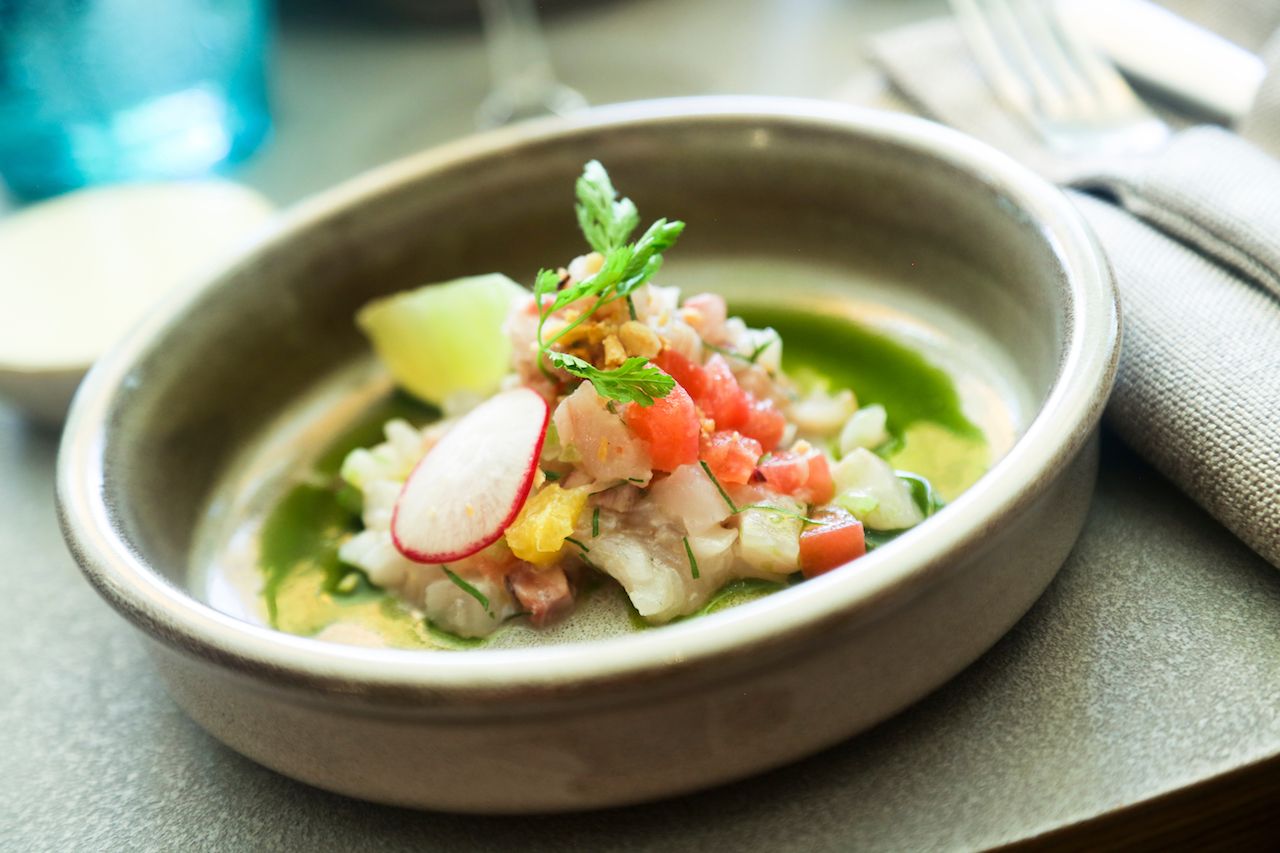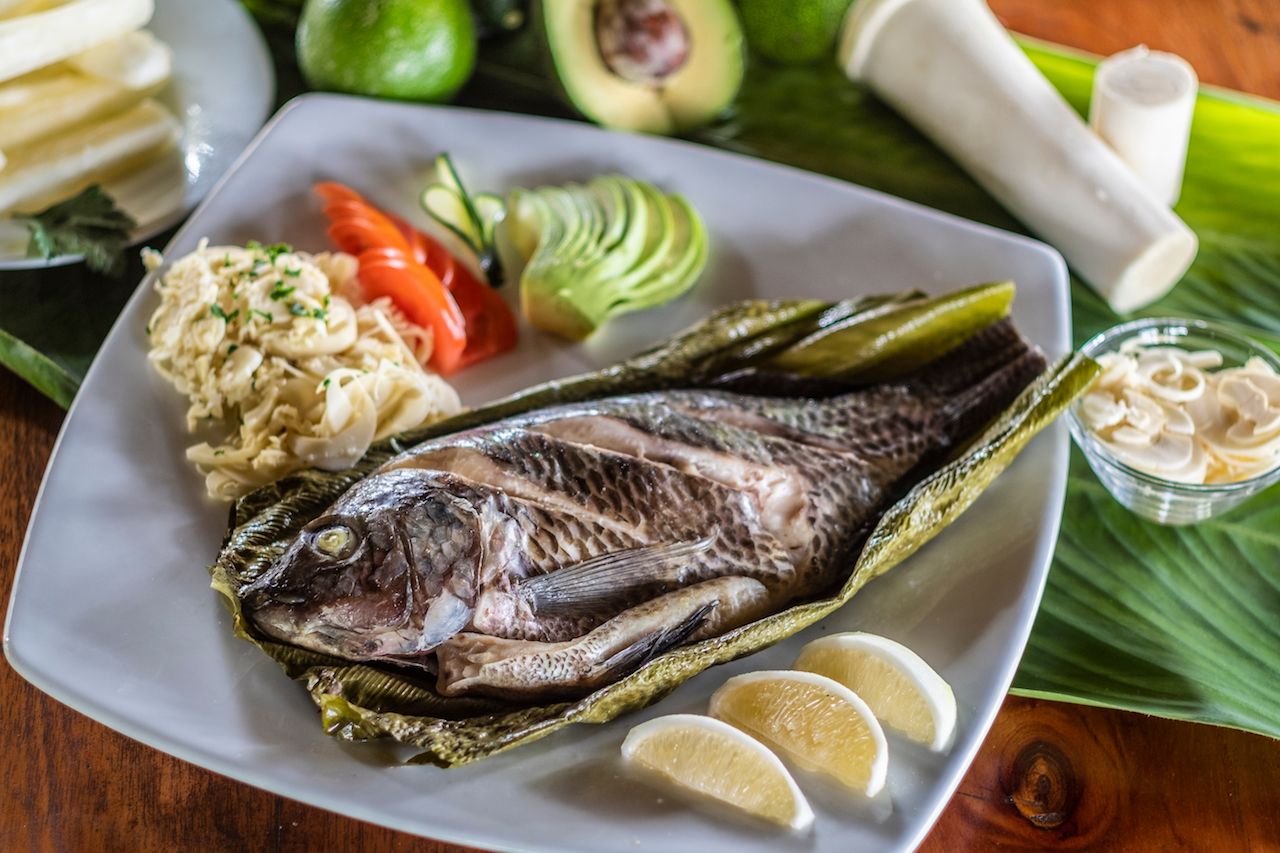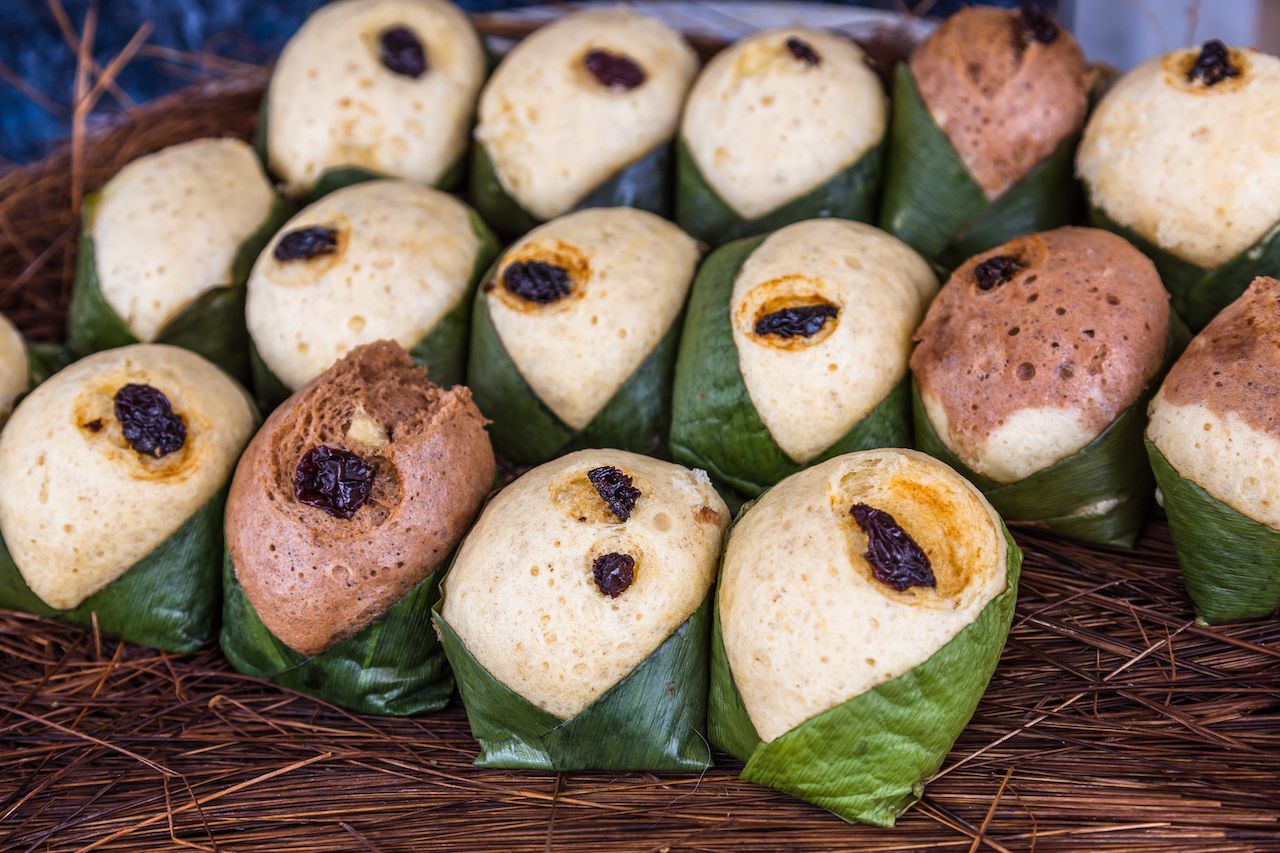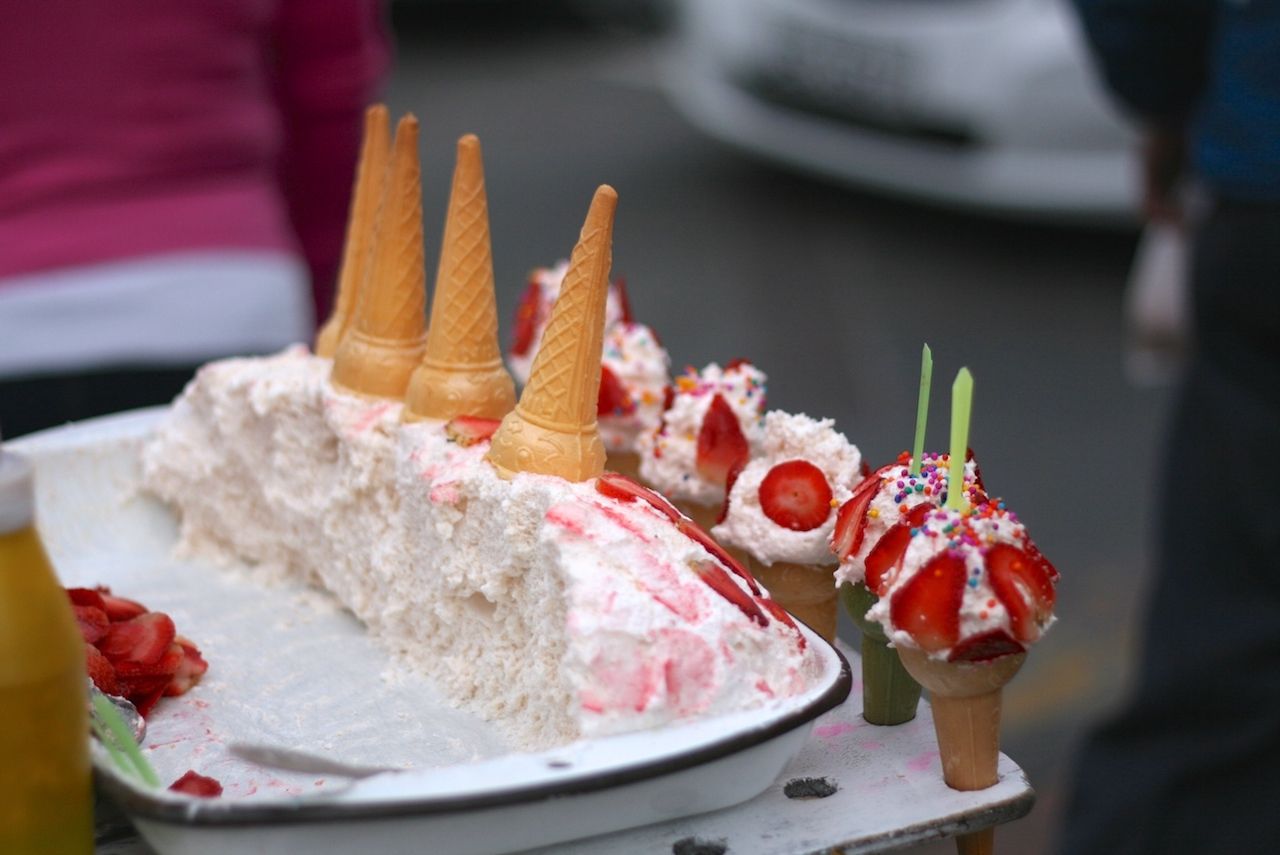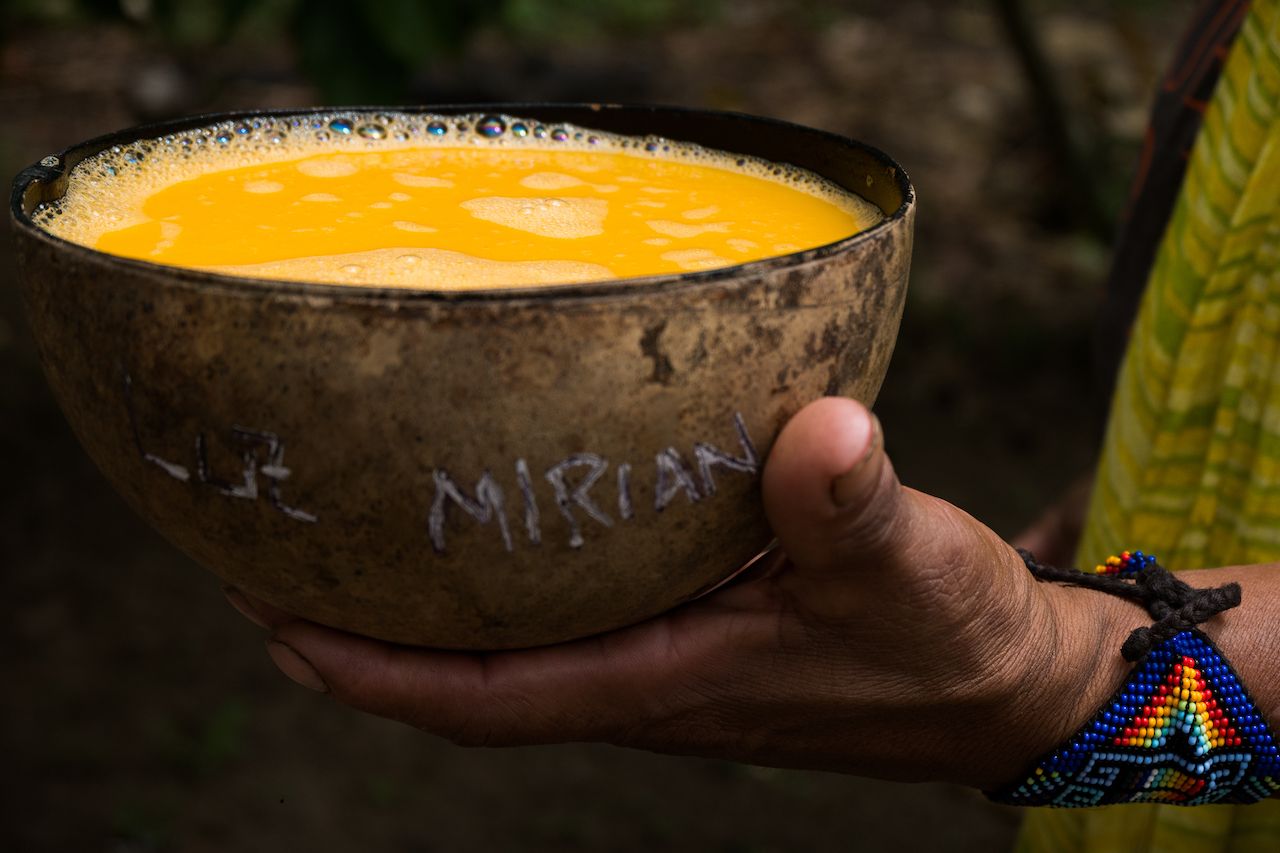While tiny in area, Ecuador has it all when it comes to food. The platos típicos, or traditional dishes, vary widely depending on the culture and climate in each region. Despite some similarities, you can find differences in the main three geographical regions: Costa (along the coast), Sierra (the mountainous region), and Oriente (the east, where you’ll find the Amazon). There are Ecuadorian food specialties that incorporate medicinal plants from indigenous tribes and those that draw from religious customs from Spain. And, of course, the hearty comfort foods for chilly nights in the Andes mountains.
Lunch is what unites the country. As the most important meal of the day, you can expect heaping platefuls of food. Families sit down to a courses-long menu with soup, a main, dessert, and a drink.
With such a range of traditions and geography, there’s always something to try in Ecuador. Don’t miss these 12 dishes, drinks, and desserts.

